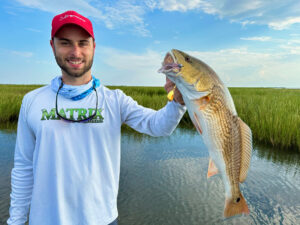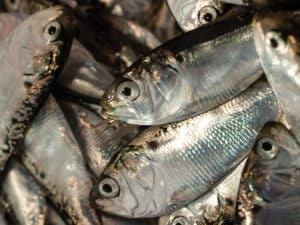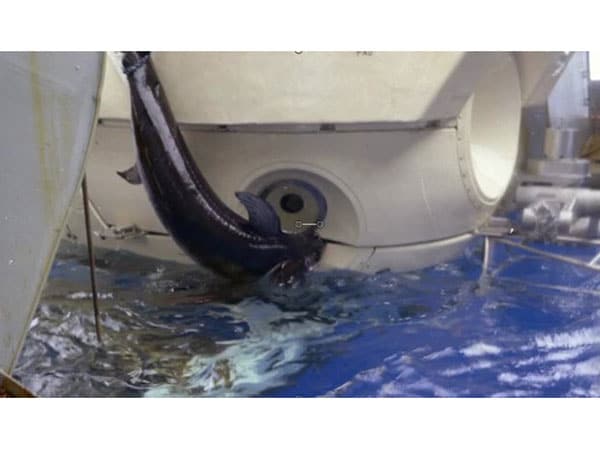
In 1967, a swordfish tried to pick a fight with U.S. Navy’s Alvin (DSV-2) deep-ocean research submersible. Though the fish was severely outgunned, it managed to get its bill stuck in the vessel’s outer hull during the battle, and forced the Alvin topside. The fish was attached when the DSV-2 surfaced, and became dinner for the crew.
Catching a swordfish with a submersible is likely a once in a lifetime feat, but there are plenty of other weird ways to catch fish. Who needs a rod and reel anyway. Check out these more repeatable fishing methods that have stood the test of time. Pike shooting anyone? Yep, that’s a thing.
Drone Fishing
Though perhaps not as advanced as a US Navy deep-water exploration vessel, drones pack a bunch of technology into a small, easy to fly package. With the advancement of these devices, and the lower price-point that comes with mass adoption, some enterprising anglers are using their drones to fish.
Land-based shark and tuna anglers have taken to using drones to ferry baits out past the breakers, where the big fish typically swim. These anglers rig their drones with remote triggers, allowing them to place baits exactly where they want them. This also permits them to use whatever rod and reel combo is needed to beat big game, including the largest Penn Internationals or similar. Other anglers are using them to catch smaller quarry such as freshwater panfish, fighting and landing them using the remote-controlled flying apparatus.
Electrofishing
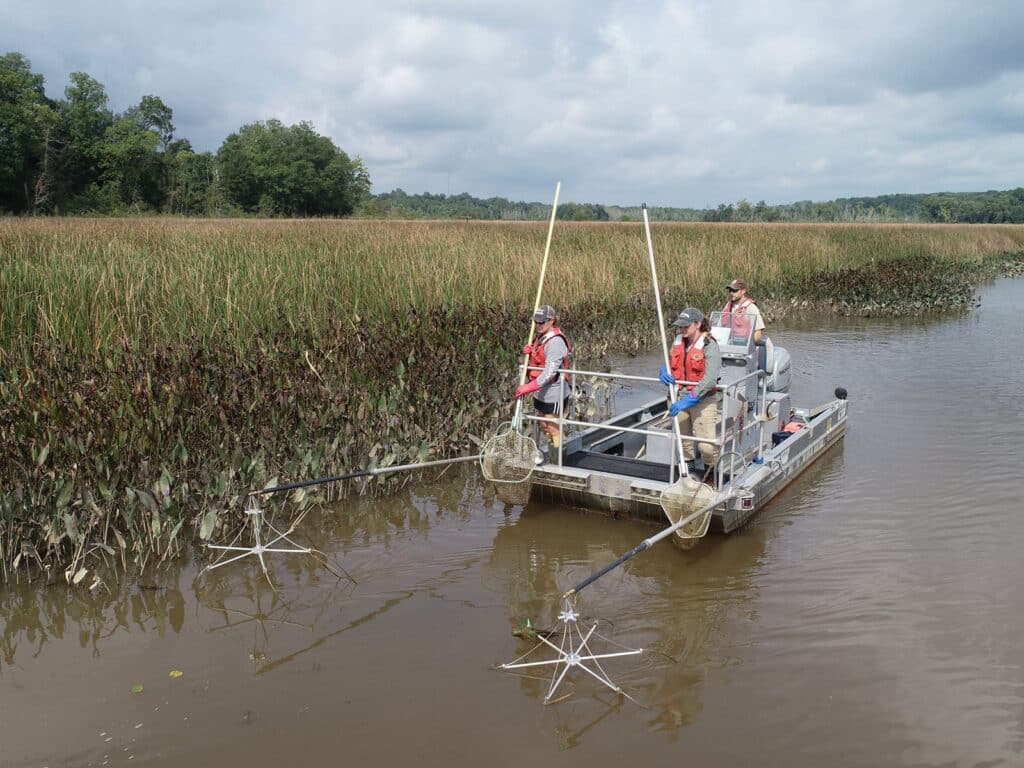
One of my favorite ways to catch fish is also one of the most effective, though no one would consider it sporting. Electrofishing is the practice of introducing an electric current into the water, briefly stunning fish and sending them floating to the surface where they can be netted. This is typically used in sampling efforts, with the stunned fish placed in holding tanks and then biometric data such as length and size is collected before their release. I’ve used this process to survey bodies of water and remove invasive species as a fisheries professional. It is as fun as it is effective.
For this process to occur, pulses of direct current are passed from a submerged anode to a cathode, which induces galvanotaxis, or involuntary muscular convulsions that cause the fish to swim toward the anode. Purpose-built electrofishing vessels with big arrays dangling off the front to induce current into the water are usually employed. A momentary on/off switch allows power from an onboard generator to transfer to the water, and the technicians scoop up the stunned fish. Smaller backpack and “barge” shockers can also be used to sample smaller waters.
Cormorant Fishing
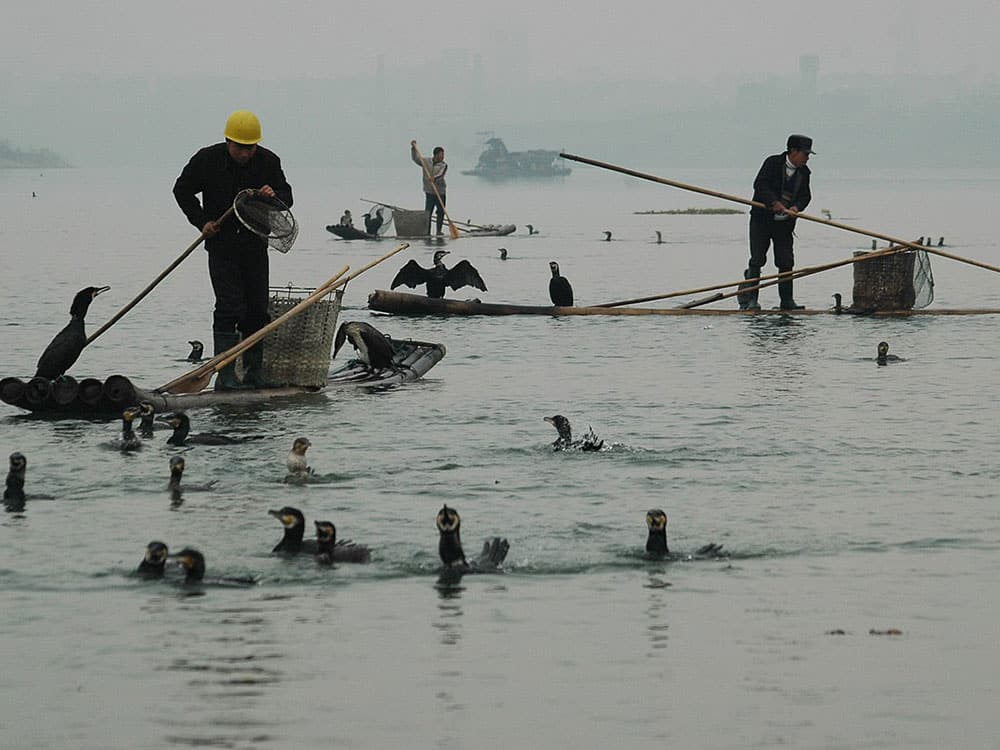
Anyone who has seen a dog leading a visually impaired person through a crowded city street or seen footage of a dog conducting search and rescue operations is familiar with the concept of service animals. While canine aids are a part of everyday life, other animals have helped humans with various tasks throughout history — including fishing.
Humans have used a variety of animals to catch fish, including birds and mammals. The ever-present cormorant has been used by several cultures including the Chinese, Japanese, Greeks, English and French. In practice, cormorant fishers tie a loose snare around the bird’s neck, which prevents them from swallowing fish. The trained bird returns to the fisherman after a successful dive and they force the cormorant to regurgitate the fish, which can then be sold or eaten.
Using Otters to Fish
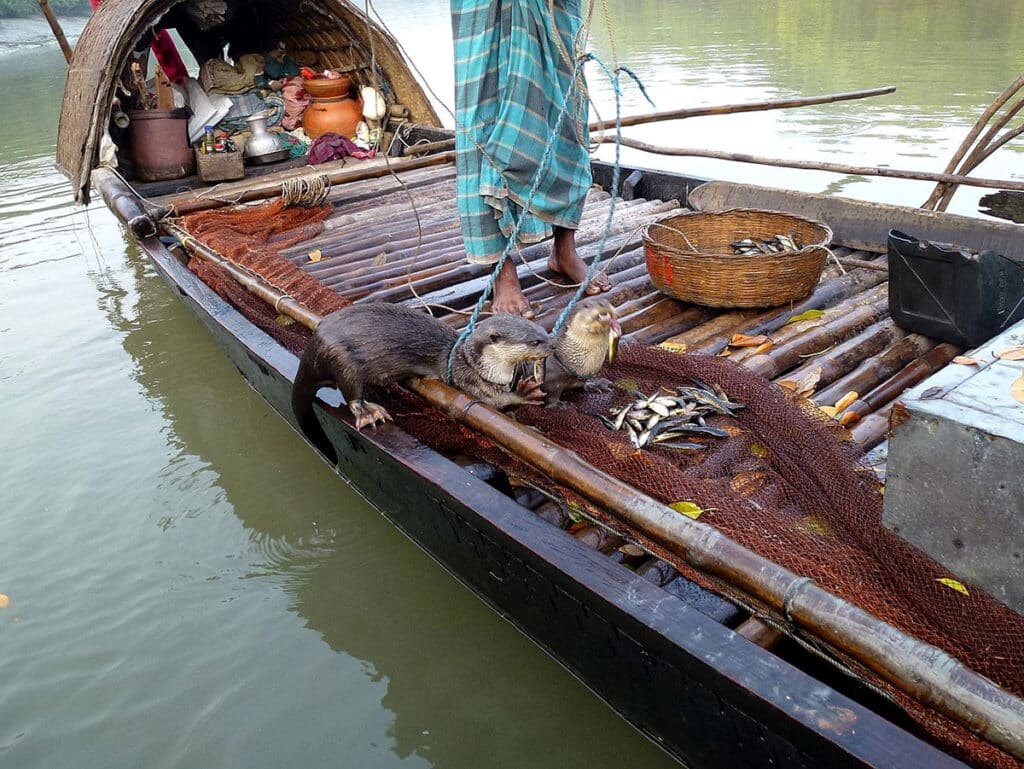
Perhaps even more unusual than the practice of using birds to catch fish is utilizing small mammals. Now typically only practiced in Bangladesh, anglers in Scandinavia, Germany, Poland, England, Scotland, China, and even North and South America used otters to catch fish. An illustration on a map from 1539 of what was then known as Scandinavia depicts an otter fetching a fish for its handler, who is ready to fillet and cook it.
Marco Polo observed otter fishing on the Yangtze River in the 13th Century, though those fishers used the otters to herd the fish into nets. Izaak Walton described fishing with otters that had been domesticated in his 1653 book, The Compleat Angler. Those that still practice otter fishing in Bangladesh do so in the manner described by Marco Polo, with teams of the small mammals driving fish into nets so that they could then be eaten or sold.
Flounder Tramping
Flounder are a favorite of anglers along all of the United States’ coastlines. Here in the States, we target our various flounder species using hook and line, and the occasional gig. But across the Atlantic Ocean, in Scotland, folks have taken to trapping flatfish underfoot. The bizarre manner of fishing seems to have evolved from dancing, and practitioners tread barefoot through the mud at low tide, ensnaring fish between their foot’s sole on the bottom. This practice was so popular that a world championship was held annually for about 40 years. Winners of the contest, which was held in Palnackie, Scotland, received a cash prize and three bottles of whiskey, in addition to international bragging rights.
Spear Fishing
Humans have been spearing fish for almost as long as we have existed. In the earliest days, man simply threw a pointed stick at fish in the shallows. Over time the equipment evolved, but the process has remained remarkably the same. Scuba divers have a variety of implements available to them, from hand-held spears that utilize elastic bands for propulsion to high-powered spearguns that fire with the power of compressed air.
But perhaps the most unusual spear fishing practice occurs in the frozen North, where anglers hide in dark houses and lure pike within spear range using intricately carved decoys. The decoy is placed below a large opening in the ice, and the angler waits for the pike to appear. Once the pike offers a clear shot, the angler throws the multi-tined spear and traps the fish.
Catfish Noodling
Even more primitive than the spear is hand fishing. In a practice known as noodling, anglers reach into holes and other likely hiding places below the water’s surface and insert their hand into a catfish’s mouth, wrestling it to the surface. Obviously this is dangerous, with snapping turtles and other creatures that bite just as likely to call those underwater hidey holes home. A bite from a snapping turtle to an unsuspecting angler’s hand can lead to serious injury. Still, catfish of impressive dimensions are often caught this way. Just make sure you have an experienced partner or two if you decide to try this out.
Pike Shooting
If spearing pike is fun, what about shooting them? Though this practice is very limited in its geographic range, anglers (or should I say riflemen) in Vermont can use firearms to take a variety of fish, including northern pike and pickerel, in the spring. The season is timed to take advantage of the two species’ spawning run, which places them in the shallows and square in anglers’ sights.
Vermont doesn’t have any stipulations as to firearm selection, permitting rifles, shotguns, handguns and even muzzleloaders of any caliber or gauge to be used. Participants often sit in tree stands placed over the water, though some prefer the bow of a boat. Other species that may be taken via firearm during this timeframe include so-called “cull” fish like gar, bowfin, shad, bullhead, and carp. Just make sure you purchase a Vermont hunting license before taking part, and abide by all size and bag limits.
Fish Wheels
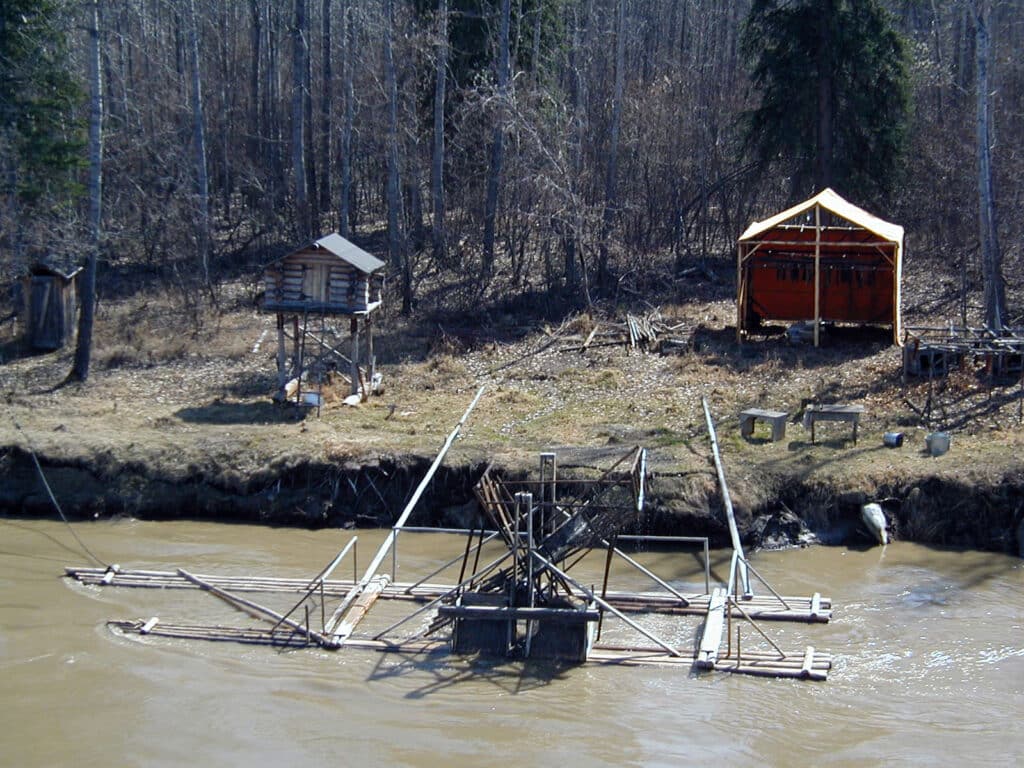
Why not automate your fishing? That’s exactly what some fishermen in Alaska and parts of Canada do. These intrepid anglers use a giant wheel, similar to what you’d see on an old-fashioned grist mill, to pluck salmon and other fish from the water. Unlike human anglers, these devices never tire, and keep working around the clock. Fish wheels are so effective that they have been banned for commercial use, and the ones that were in place on Oregon’s Columbia River were blamed in part for the river’s diminished salmon runs. Today, they still provide Native villages and other subsistence communities with enough filets to make it through a long winter.
La Mattanza
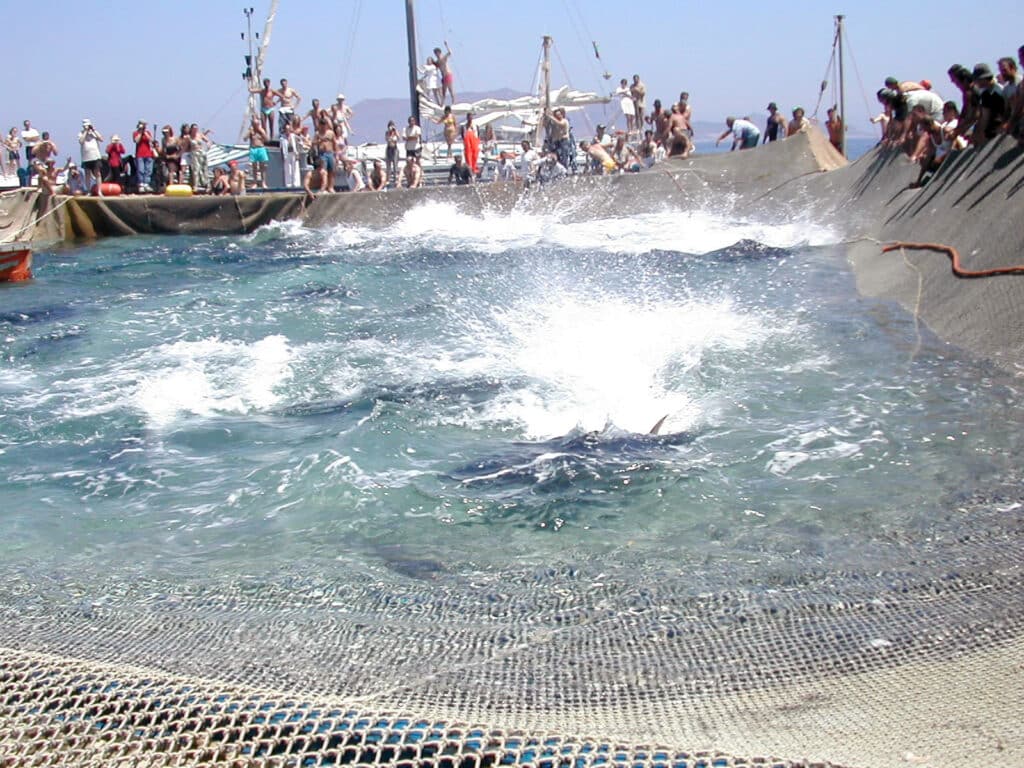
Schools of bluefin tuna migrate through the Strait of Gibraltar and into the Mediterranean, passing right along the edge of Sicily around the beginning of May. To intercept the tuna, the denizens of seaside Sicilian towns would take to the sea in whatever vessels they could and herd them into a giant net with a series of ever smaller chambers, known as a tonnara. The entranceways of the tonnara were often up to two kilometers (1.2 miles) long, and funneled the tuna into ever smaller chambers of the net, which ultimately culminates in the la camera della morte, or the “death chamber.” The bottom of this chamber could be raised, bringing the tuna to the surface. The townsfolk then attacked the fish with whatever edged tools they had, often farm implements.
Unfortunately, this annual ritual, known as the mattanza, or “slaughter,” is a thing of the past. The last one took place off the islands of Favignana in 2007. The runs of tuna have decreased each year, rendering the semi-permanent trap nets ineffective.



